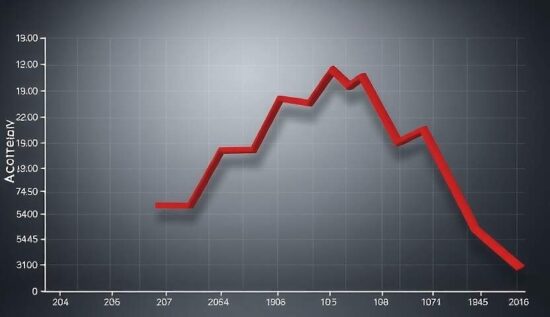Economic Forecasts Leave Little Room for Optimism
The current economic forecasts of Wifo and IHS leave little room for optimism. Austria’s economy is expected to experience a further decline in economic performance of 0.3 percent in the year 2025.
Despite a budget package, the general government budget deficit is likely to be around 3.3 percent of the gross domestic product (GDP), which would again exceed the Maastricht limit of 3 percent. Even for the year 2026, the economic research institutes are forecasting a deficit of around 3.5 percent. This means that Austria is likely to violate the EU’s budget rules in the coming years.
Last year, the deficit was around 4 percent and it is expected to continue rising before the official numbers are published by Statistik Austria. The budget consolidation of the new federal government particularly contributes to the economic weakness, which dampens the economic growth by 0.3 percentage points.
Industrial production in Austria is expected to continue under pressure, with a decline of 3 percent forecast for 2025. This will particularly hit the economy, as the industry plays a central role in Austria’s economy. At the same time, the population in Austria will continue to grow, leading to a decline in GDP per capita.
In addition to the economic weakness, the interest burden is growing, which will consume 7.6 billion euros this year and rise to 8.5 billion euros by 2026. This will exceed the planned savings from the government’s budget package.
Tax revenues are falling short of expectations due to the weakening economy, making it even more challenging to achieve the planned budget consolidation. The government has agreed on a budget package of more than 6.3 billion euros for 2025 and 8.7 billion euros for 2026. However, it remains unclear whether the EU’s budget rules can be complied with, as the economy continues to stagnate and public expenditures, particularly in the areas of pension and health costs, continue to grow.
The economic and budgetary situation in Austria remains strained, with an economic recovery expected at the earliest in mid-2025 – if at all. The uncertainty is further exacerbated by the looming trade policy of Trump and the abandonment of cheap Russian gas, making the situation even more difficult to calculate. It can be expected, however, that economic stability will continue to be on the brink. The uncertainty regarding the future development of public finances remains great, as the rising interest burden and the ongoing economic decline continue to have a significant impact on the budget situation.





